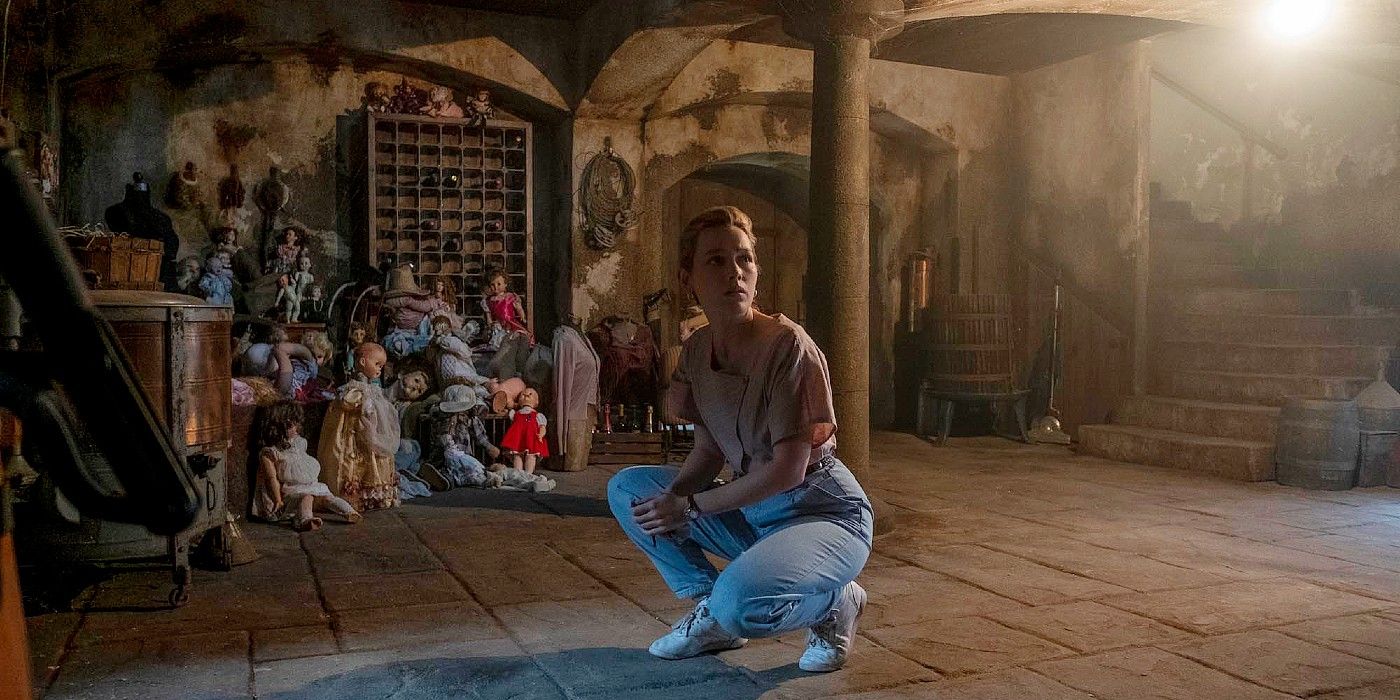WARNING! Major spoilers for The Haunting of Bly Manor
Mike Flanagan’s second endeavor in his Haunting series, The Haunting of Bly Manor, features fewer ghosts than its predecessor, The Haunting of Hill House — while this might be disappointing to ghost hunters, the lack of spirits floating around the titular manor was done for a very specific reason.
Flanagan’s Bly Manor follows a different Gothic horror story, and as such, is not a direct sequel to Hill House. This was done purposefully, as the director’s goal with the Netflix original series was to take an anthology-driven approach, adapting different ghost stories. After the announcement that he wouldn’t be returning to continue the Crain family’s story, Flanagan said that Bly Manor would be based off the Henry James novel, The Turn of the Screw, which has seen other film adaptations, including a 2020 outing that updated the Victorian setting to the 1990s with Floria Sigismondi’s much-maligned, The Turning. Flanagan also gives James’ story a setting update, with the primary events taking place in the 1980s, though there are some jumps in time that will feel familiar to those who watched Hill House.
Though Bly Manor draws from several of James’ stories, the backbone and structure of the narrative has elements of Gothic romance and features a supernaturally-driven love story. As such, the ghosts all serve a greater purpose — Flanagan chose to flesh out their backgrounds, making them more well-rounded and a bigger part of the season. Just as Hill House was a character-driven tale that revolved around the Crain family, Bly Manor is focused around the house, its tragic history, and the fleshed-out ghosts who are trapped there. It’s due to this perspective shift that Flanagan took a more expansive approach with the ghosts, bringing them front and center to tell their stories. Though there are still a few hidden ghosts, albeit not as many as audiences likely missed in Hill House, the focal pivot adds a different element to the terrors hidden within Bly Manor by making them feel more intensely real.

The ghosts in Hill House were deliberately kept mysterious so as not to detract from the focus on the Crain family. This was a smart decision, as the audience’s willing investment in their story needed to be the driving force. The success of the series depended on it, and as Hill House was a smash hit, the decision paid off. Another aspect of Hill House that required the existence of more ghosts is the fact that the house itself is the primary antagonist. Since Hill House had a more ambiguous, open ending than Bly Manor does, there’s a lack of resolution. The ghosts at Hill House will always be a part of it, and there could likely be more — the house is also a far more dark, sinister presence than Bly Manor‘s primary antagonist, Viola, who resisted death so many times it literally stopped coming to collect from Bly Manor. This is what created the gravity well that keeps everyone who dies there trapped in purgatory.
In the ending of The Haunting of Bly Manor, it’s revealed that, due to Dani’s sacrifice, the Lady in the Lake has been appeased, and no other ghosts will be able to join the eternal residents of the manor. While this isn’t exactly a happy ending, as Dani’s wife, Jamie (Amelia Eve/Carla Gugino), has to spend out the rest of her days without the woman she loves, it is a reasonably happy ending for Bly Manor. Many of the spirits who were there, including Miss Jessel (Tahirah Sharif), Peter Quint (Oliver Jackson-Cohen), and Hannah Grose (T’Nia Miller) will get to find some peace and finally move on.
Even the Lady herself, Viola (Kate Siegel), gets to find some semblance of closure, and while she’ll never leave the Manor, she won’t have to continue on existing in the same, restless loop. This ending also gives those watching The Haunting of Bly Manor some much-needed closure, and a bittersweet finale for characters—both living and dead—with whom they’ve likely come to empathize and connect with. It’s more powerful than a bunch of random ghosts in the background, though arguably less terrifying and more emotionally poignant, as Gothic horror and ghost stories often are.




